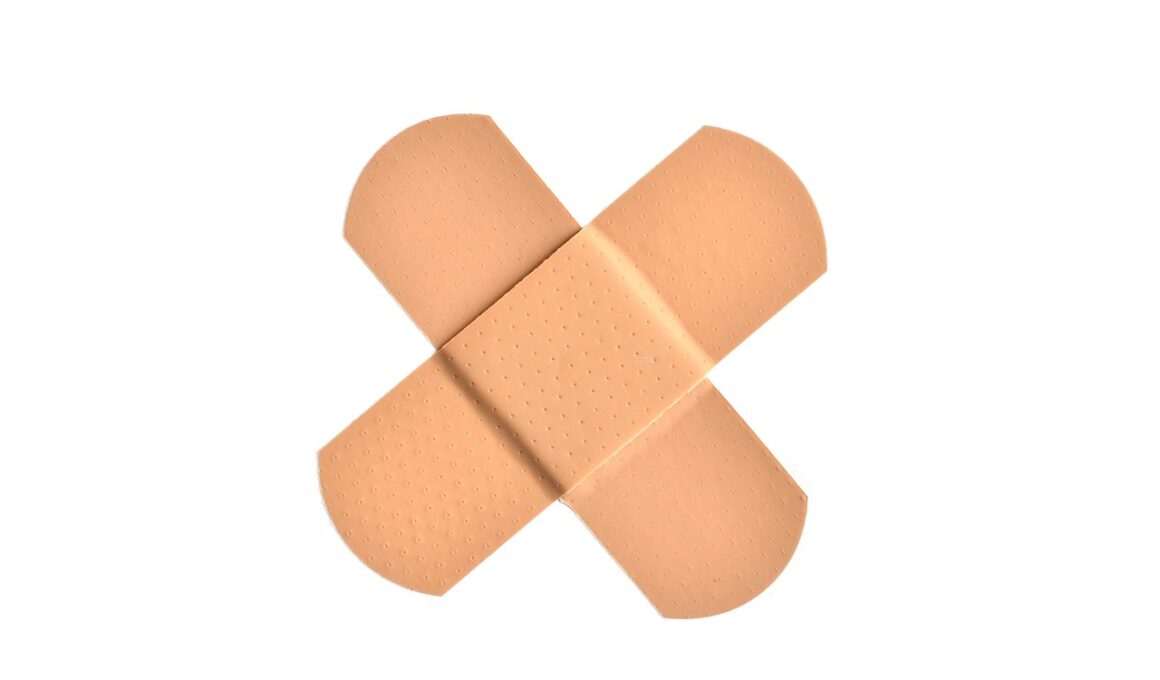Top 10 Most Common Sports Injuries and How to Prevent Them
Sports injuries can be detrimental to athletes and physical activities enthusiasts alike, leading to long recovery times and preventing participation in beloved sports. Understanding the most common sports injuries is crucial for both prevention and recovery. Among the most widespread injuries are sprains, strains, and fractures, which can occur in various sports contexts. Sprains typically affect ligaments and often occur during sudden changes in direction, while strains impact muscles and tendons, resulting from overstretching or overexertion. The prevalence of injuries like runner’s knee, Achilles tendonitis, and shin splints emphasizes the importance of awareness and proper training. Developing a strong core and maintaining flexibility through regular stretching can significantly reduce the risk of these injuries. Additionally, proper footwear and equipment tailored for specific sports can support injury prevention. Athletes should consult with coaches and medical professionals to ensure their training regimens incorporate strength-building exercises tailored to their specific needs. By investing time in learning about injury prevention, athletes can continue enjoying their favorite sports while minimizing the risk of injuries significantly.
One prevalent sports injury is the ankle sprain, often attributed to twisting motions or uneven surfaces. To mitigate the risk of this injury, athletes should prioritize proper warm-up routines and balancing exercises that enhance stability and strength around the ankle joint. Incorporating ankle-specific exercises, like resistance bands or rehabilitation programs, can bolster the muscles and ligaments surrounding the ankle, thus providing additional support. Furthermore, wearing ankle braces during practices and competitions can offer vital protection, especially for athletes with a history of sprains. If an ankle sprain does occur, early intervention with the RICE method (Rest, Ice, Compression, Elevation) is critical. This immediate response helps limit swelling and minimizes recovery time effectively. Long-term management may entail physical therapy to restore strength and functional mobility. Ultimately, awareness of ankle sprain risk factors and consistent preventive measures greatly influence recovery outcomes and overall athletic performance. Athletes should also work closely with their trainers and medical staff to develop personalized strategies that enhance their performance while protecting their ankles from injury.
Knee Injuries: Types and Recovery Strategies
The knee is one of the most heavily utilized joints in sports, making it particularly susceptible to injuries. Common knee injuries include tendonitis, ligament injuries (such as ACL tears), and meniscus tears. These injuries often result from sudden stops, jumps, or awkward landings. Preventive measures can significantly decrease the chances of such injuries. Performing strength exercises focusing on the quadriceps, hamstrings, and stable core can help maintain adequate support for the knee joint. Additionally, incorporating agility drills can enhance balance and coordination, mitigating risks during sports activities. Prioritizing proper footwear is crucial, as shoes that provide adequate support can prevent knee injuries associated with misaligned movement. If a knee injury does occur, the importance of seeking medical evaluation cannot be overstated. Early intervention promotes proper healing and minimizes long-term damage to the knee. Recovery protocols may include physical therapy, anti-inflammatory medications, and sometimes surgical intervention in severe cases. Lastly, maintaining good body mechanics and a healthy weight can further relieve pressure on the knees and hasten recovery.
Shoulder injuries, particularly among athletes in contact sports or overhead sports, are common obstacles faced by many. Rotator cuff injuries and shoulder dislocations can severely hinder athletic performance. Preventative measures for shoulder injuries focus on strength and flexibility. Engaging in strengthening exercises for the shoulder muscles can maintain joint stability, while regular stretching supports muscle elasticity. Athletes should also incorporate warm-up routines specific to their sports, targeting the shoulder joint and surrounding muscles to minimize the risk of injury. Adequate recovery time post-injury is essential; ignoring pain can delay healing and lead to chronic issues. Post-rehabilitation, athletes must gradually reintroduce activities to restore strength and motion fully. Consulting sports medicine specialists during the recovery process can facilitate a safe return to sports. Additionally, utilizing shoulder supports can provide stability during high-risk activities. Education regarding proper techniques for falling or landing can also mitigate injury risks significantly. Thus, understanding shoulder anatomy and implementing safe practices cultivate a healthier sport environment for all athletes.
Wrist and Hand Injuries in Sports
The wrist and hand injuries are often overlooked but can immensely impact an athlete’s performance. Common injuries include sprains, fractures, and overuse injuries. These injuries result from falls, repetitive motions, or gripping mechanisms prevalent in various sports. Continuing to strengthen the wrist and grip through specific exercises, such as wrist curls and grip strengtheners, promotes durability. Furthermore, athletes should utilize protective gear such as wrist supports or gloves, especially when engaging in high-risk activities like skateboarding or gymnastics. Proper techniques for falls can also help minimize wrist injuries by directing impact toward the forearms rather than the wrists. If a wrist injury occurs, it’s vital to follow the RICE method for initial care and seek professional guidance regarding rehabilitation. Engaging in physical therapy may assist in restoring functionality and strength over time. As with any other sports-related injury, remaining aware of the signs and symptoms of wrist issues early facilitates quicker interventions and better outcomes. Ultimately, fostering an understanding of wrist and hand injuries encourages proactive measures throughout all sporting activities.
One often neglected aspect of sports injuries involves concussions, which can occur in a variety of sports, particularly contact sports like football and hockey. Understanding the signs and symptoms of a concussion is crucial for athletes, coaches, and parents. Such symptoms may include headaches, dizziness, confusion, memory problems, and loss of consciousness. Immediate action is essential when a concussion is suspected. An athlete should remove themselves from the game without hesitation to prevent further risk of injury. Education on concussion management emphasizes the need for a thorough evaluation by medical professionals prior to returning to athletic activities. Preventing concussions can also involve implementing proper training techniques for tackling and protective gear that meets safety standards. Athletes should adhere to concussion protocols, ensuring adequate recovery time before resuming contact sports. Early intervention strategies can help mitigate long-term consequences such as chronic issues or cognitive impairments. Spreading awareness about concussion risks promotes a safer sports environment for all participants. Remaining observant regarding one’s health or teammates promotes a culture of safety and vigilant awareness in sports.
Understanding the Importance of Cooling Down
Following sports activities, cooling down is a critical practice that is often underestimated. A proper cooldown helps prevent injuries by gradually lowering heart rates and easing muscle tension. It aids in the removal of metabolic waste products, thus reducing soreness and stiffness. Athletes can engage in light aerobic activities or stretching exercises to facilitate an effective cooldown. Emphasizing the importance of hydration during cooldown periods ensures optimal recovery and muscle function. Athletes should integrate at least 10-15 minutes of cooldown routines into their training programs to enhance overall recovery outcomes. Stretching muscles post-activity encourages flexibility and mobility, decreasing the likelihood of injuries caused by tight muscles. Ignoring cooldowns may lead to prolonged recovery time and increased injury risk, making this practice an essential component of regular training. Additionally, fostering self-awareness of body signals during cooldown periods aids in identifying possible underlying issues, promoting early intervention if needed. Overall, athletes should prioritize cooldowns to finish up their training sessions safely, paving the way for a successful return to sports.
In conclusion, staying informed about common sports injuries provides athletes with the essential tools to enhance their performance while minimizing injury risks. The integration of preventive strategies, from proper training techniques to maintaining overall physical health, promotes safer sporting experiences. Emphasizing the importance of strength training, flexibility, and adequate warm-up and cool-down routines significantly reduces the likelihood of common injuries such as sprains, fractures, and concussions. It’s crucial to recognize the signs and symptoms of injuries promptly, ensuring timely interventions support quicker recovery. Athletes should develop open communication with trainers and healthcare professionals to create personalized prevention plans that suit their needs. Fostering a proactive mindset toward injury prevention can lead to long-lasting health benefits, keeping athletes active and enjoying sports throughout their lives. By understanding the dynamics of sports injuries and implementing best practices, the risk of injury dramatically decreases, and performance potential increases. With comprehensive awareness and education regarding common sports injuries, athletes can cultivate resilience and focused enthusiasm as they engage in their beloved sports.


